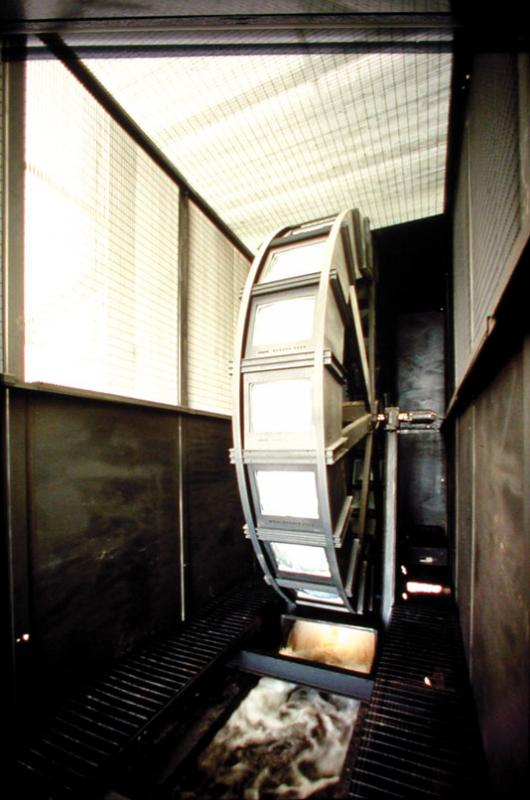Reggio Emilia, Italy, 1940. Lives and works in Venezia and Maiorca
He completed his studies at the Artistic Lyceum and at the Academy of Fine Arts in Venice where he was eventually assigned the Chair of the Department of Painting.Since 1968, Plessi has been fascinated by water, a recurring theme which has become the focus of his artwork in the form of installations, films, videotapes and performances.In 1970 his work was exhibited at the experimental Pavilion of the Biennial of Venice and again in 1972. From this moment on, he holds exhibitions in various European galleries and museums, amongst which the Städtische Galerie of Munich, the International Cultural Center of Antwerp and the Palais des Beaux Arts of Brussels. During the 1980’s Plessi begins to experiment with video, focusing on the illusions created between representation and reality of liquid elements which are amplified by the extreme technology of mechanical and electronic reproduction. In 1985 Plessi presents his first complete anthology and the first exhibition of environmental video-installations in Milan Italy at the Rotunda Besana. The following year the artist represents Italy at the 42nd Biennial of Art in Venice where he creates one of his most significant works, Bronx.In 1987 Plessi displays Roma, a monumental installation in Kassel, and from this moment becomes notoriously famous on an international scale with exhibitions in many prestigious locations worldwide, amongst which the Spanish Museum of Contemporary Art, the Kuntsterverein of Cologne, the Biennial of Nagoya in Japan, the Juan Mirò Foundation of Barcelona, the Historical Art Museum of Vienna and the Sony-sponsored exhibition space in Berlin, just to mention a few. More recently his artistic endeavours have drawn him closer to the city of Venice, where water – focal point of his art – plays a dominant role. In 2003, Fabrizio Plessi creates an installation for the Peggy Guggenheim Collection: Digital Fall one of the most technologically advanced sculptures in the world, fully equipped with constant air-control, an ultra-flat Led screen and full colour display.
In 2005 the artist creates an updated version of Mare Verticale at the entrance to the Biennial Gardens: a cylinder that appears to emerge from the Venetian lagoon at a height of 44 meters, the symbol of the same Biennial of Art. In 54th Venice Biennale of 2011, Venice Pavillion is completely dedicated to him with video-installations MARI VERTICALI with big steel black boats, with a permanent and exciting water concert.
